Li Bai (701-762 AD), also known as Taibai and titled as Qinglian Jushi, was a renowned romantic poet of the Tang Dynasty, honored by later generations as the “Poetic Immortal.” From an early age, we have learned Li Bai’s poems and heard stories about him. However, little known to many is that he was also very skilled in calligraphy. It is just overshadowed by his exceptional talent in poetry.
The only existing calligraphy work by Li Bai that we can see today is his “Shang Yang Tai Tie” (as shown in the picture below). This calligraphy piece was created by Li Bai, along with Du Fu and Gao Shi, during their visit to Wangwu Mountain in the third year of the Tianbao reign (744 AD) of the Tang Dynasty, on the eighteenth day of the third month.
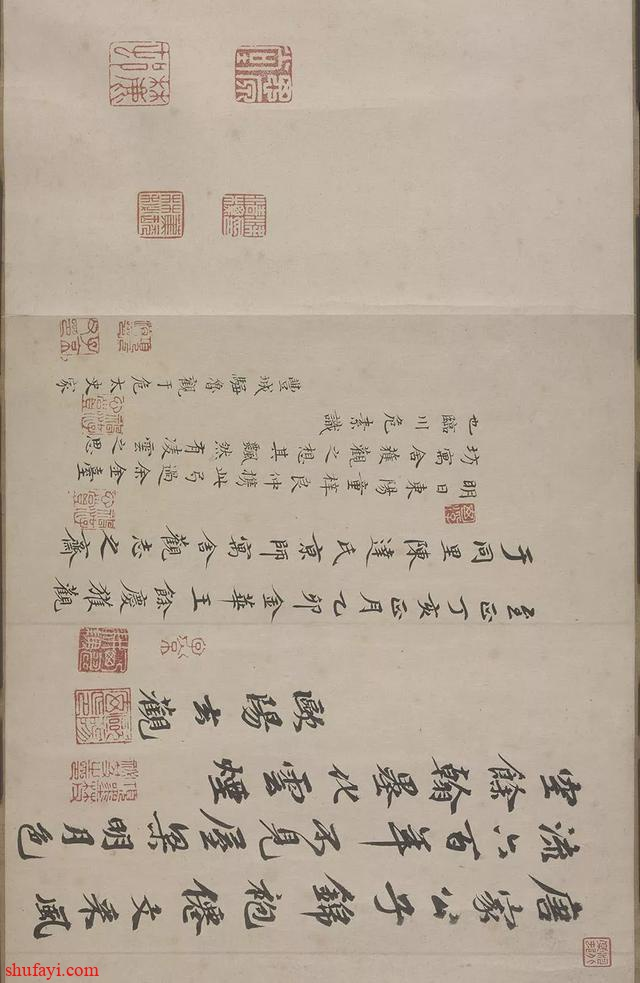
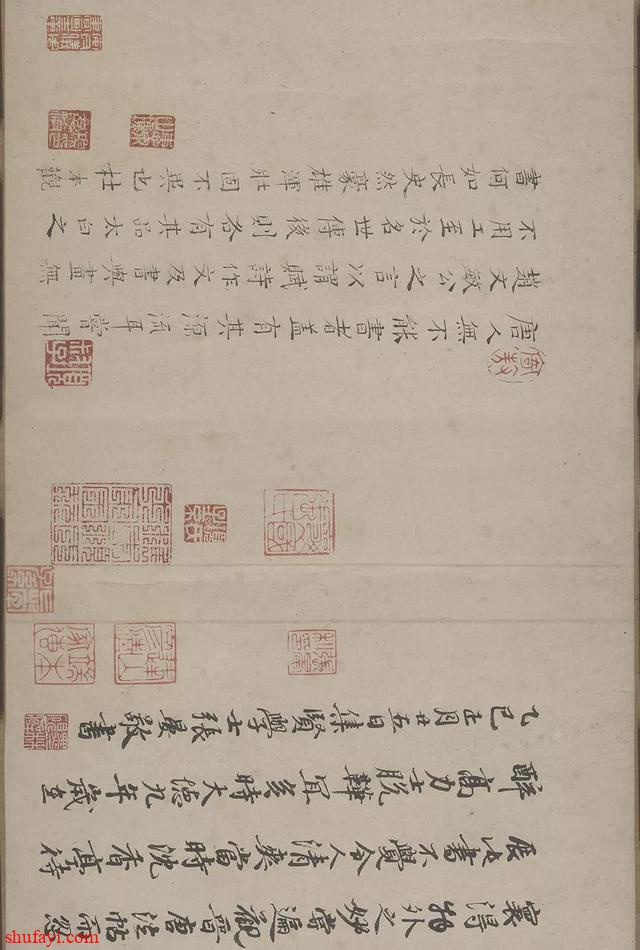
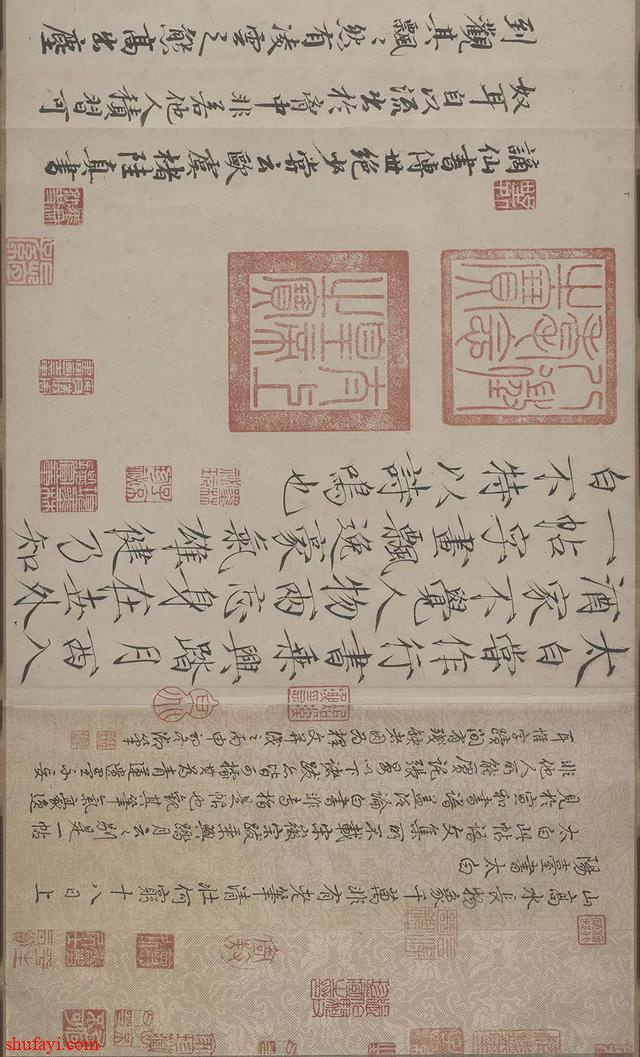
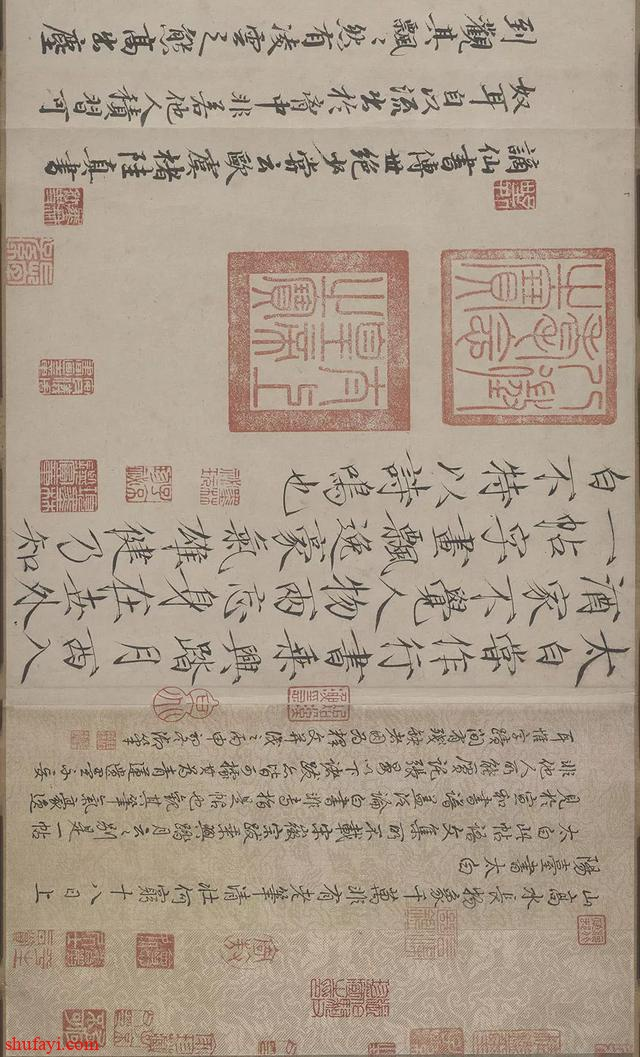
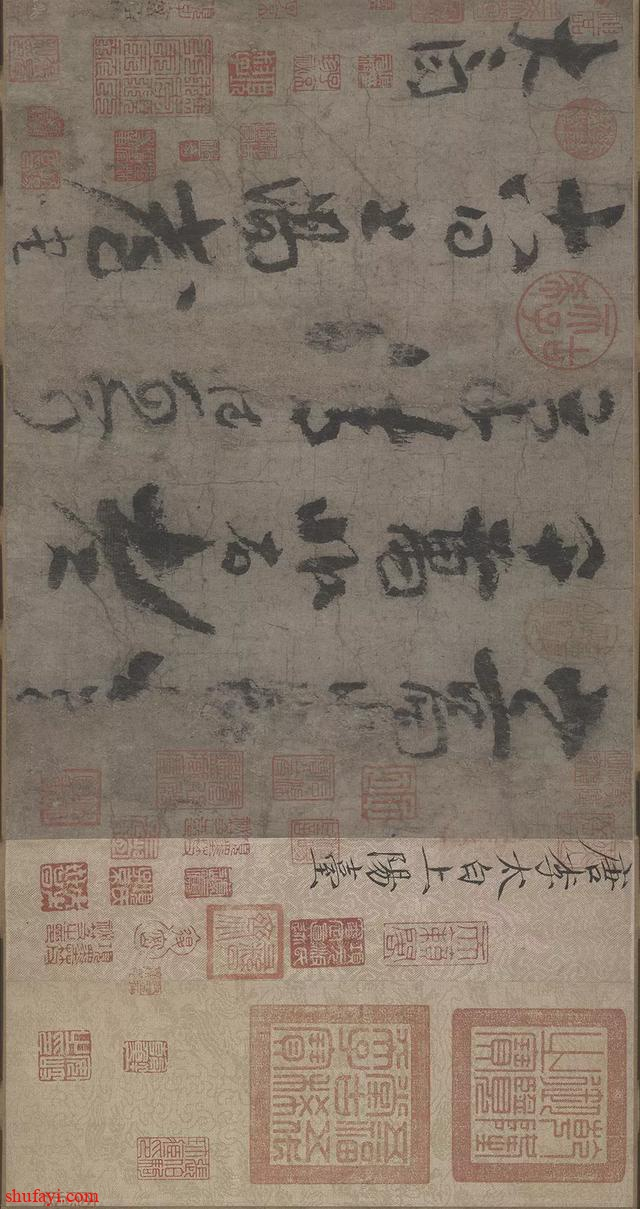
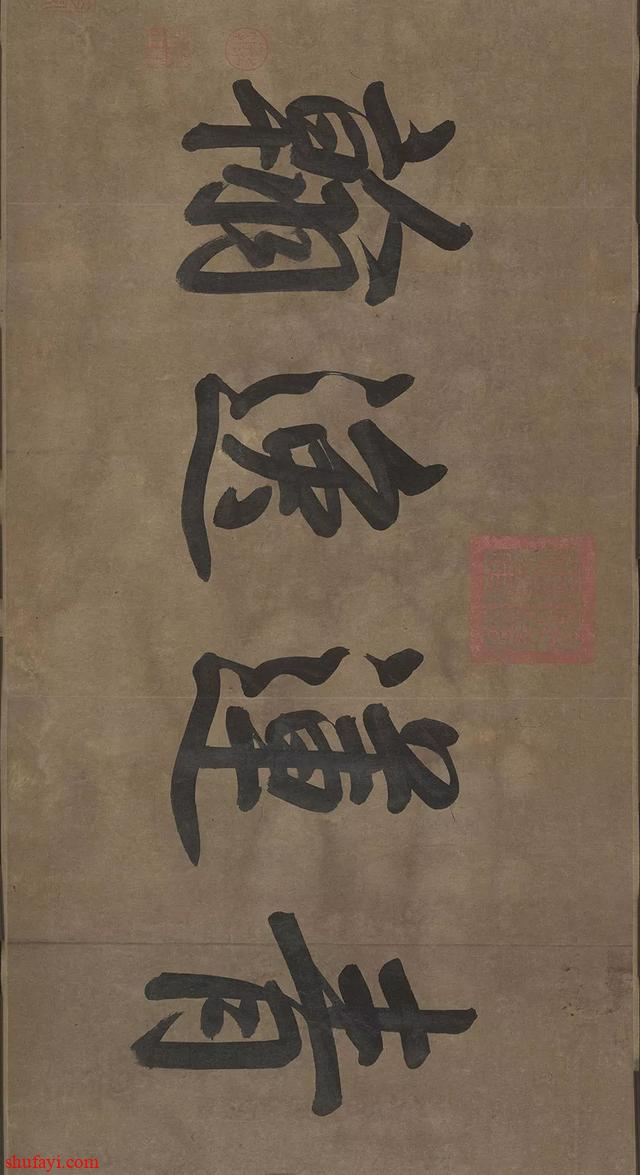
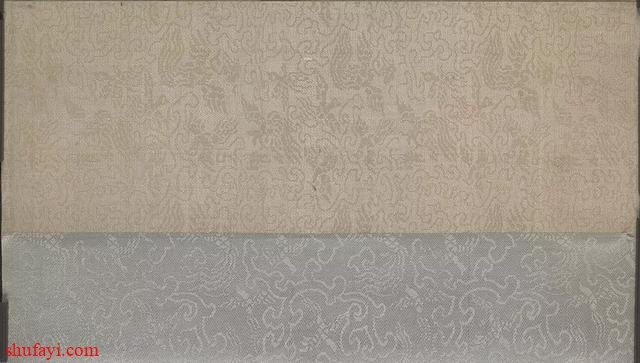

The “Shang Yang Tai Tie” is a four-character poem written by Li Bai. At the beginning, there are four characters inscribed by Emperor Qianlong of the Qing Dynasty: “青蓮逸翰” (Qing Lian Yi Han). Additionally, there are endorsements by Emperor Huizong of the Song Dynasty and the collection seal of Zhao Mengfu, a master calligrapher from the Yuan Dynasty. The entire piece is well-preserved except for the missing and unclear characters “水長” and “萬象”.
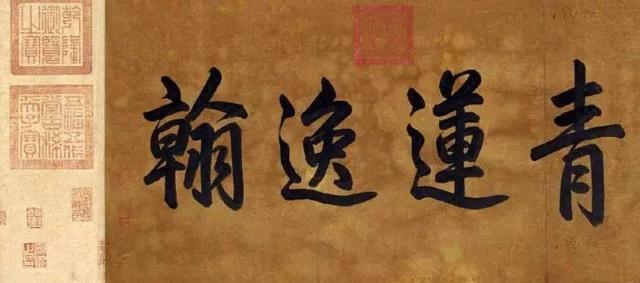
Emperor Qianlong’s inscription on the “Shang Yang Tai Tie” is notable. During the Song Dynasty, there were many authentic calligraphy works by Li Bai stored in the imperial court, including cursive scripts such as “Sui Shi Wen,” “Drunkard’s Letter,” and “Drinking Poem,” as well as running scripts like “Cheng Xing Tie” and “Tai Hua Feng.”
As Li Bai’s calligraphy works were as widely acclaimed as his poetry during the Tang and Song Dynasties, it is likely that many of his calligraphy pieces were also circulated among the public. However, over time and due to factors such as wars, natural disasters, and human destruction, Li Bai’s calligraphy works have been lost in transmission, with only his poetry being passed down through generations.

宋徽宗的提拔
Now, we can only experience the poetic sentiments of the “Poetic Immortal” from Li Bai’s calligraphy work, “Shang Yang Tai Tie,” which contains only about twenty characters. It is recorded that Li Bai’s cursive script was influenced by Zhang Xu, a great calligrapher from the Tang Dynasty. His running script gives people a sense of boldness and vigor. While it may not appear beautiful to many, his brushwork is robust, flexible, and structurally varied, with characters ranging in size, showcasing unrestrained boldness. It can be said that his calligraphy reflects his persona.